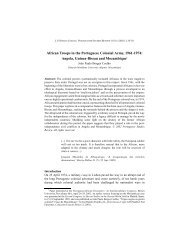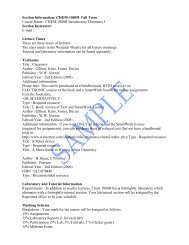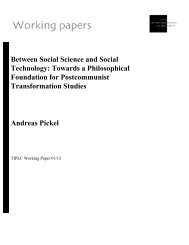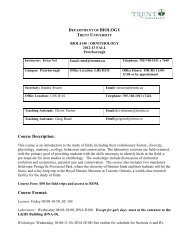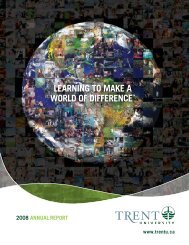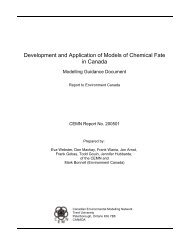AUTHOR COPY - Trent University
AUTHOR COPY - Trent University
AUTHOR COPY - Trent University
You also want an ePaper? Increase the reach of your titles
YUMPU automatically turns print PDFs into web optimized ePapers that Google loves.
Shroff<br />
First Nations philosophies are similar. First Nations peoples see themselves as<br />
part of a Sacred Hoop or Circle of Life, not having control over it; they are<br />
careful to maintain a balance with life (Hunter et al, 2006). Just as we impact<br />
the broad cultural climate in which we live, our physical, emotional and psychological<br />
health is influenced by that very climate. Social harmony thus influences<br />
individual well-being in many First Nations cosmo-visions. First Nations<br />
healers advise people to see everyone as a family member or friend thus<br />
encouraging social integration (Musqueum Elder Shane Pointe, 5 November 2006,<br />
personal communications). The Medicine Wheel, representing harmony and<br />
connectivity, takes this concept further. It represents all of creation: all planets,<br />
stars, peoples, animals and plants. It is the basis of community health with the<br />
circle symbolizing the cycles of the seasons and of life, and wholeness and perfection.<br />
First Nations peoples’ healing circles, sweat lodge ceremonies and other<br />
healing rituals are generally performed in a circle. The circle emphasizes togetherness<br />
and community unity, without which the individual cannot be well.<br />
Systems science<br />
These ancient principles are also present in some fields within contemporary<br />
science. Francisco Varela, for example, observes that Buddhist ideas are prevalent<br />
throughout our Western culture – in physics and biology, for example,<br />
the basic ideas are Buddhism in disguise (Lee, 2006). During the past few<br />
decades, scientists from various disciplines, such as Ilya Prigogine, Erich<br />
Jantsch, Gregory Bateson, Humberto Maturana and Manfred Eigen, have developed<br />
emerging systems views of the world and made the study of living systems,<br />
organisms, social systems and ecosystems their focus.<br />
The systems view focuses on integration and relationships and sees systems<br />
as integrated wholes whose properties cannot be reduced to its smaller units.<br />
Every organism, from the smallest bacterium to plants, animals and humans, is<br />
integrated and considered as living systems. Families and communities are also<br />
considered as systems. Gregory Bateson (1972), for example, was interested in<br />
studying patterns, which connect crabs to lobsters, orchids to humans and in<br />
seeing the interrelatedness of life forms. For hundreds of years, much of<br />
Western science concentrated on isolating the world’s basic building blocks.<br />
Now that this has been achieved to some extent, the systems approach emphasizes<br />
principles of organization (Kineman and Kumar, 2007) creating a more<br />
ample understanding of matter, from macro- and micro-perspectives. Systemic<br />
properties are lost when a system is dissected, either physically or theoretically,<br />
into isolated elements. Although it is possible to discern individual parts in<br />
any system, the nature of the whole is different from the mere sum of its<br />
parts (Kineman and Kumar, 2007). This understanding ties in very well with<br />
principles of holism and holistic health.<br />
<strong>AUTHOR</strong> <strong>COPY</strong><br />
246 r 2011 Macmillan Publishers Ltd. 1477-8211 Social Theory & Health Vol. 9, 3, 244–255




